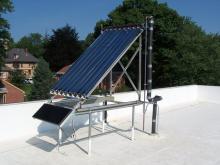
Physical Plant Solar Hot Water Installation
The Physical Plant Administration building derives all of its domestic hot water needs from solar panels mounted on the roof of the building.
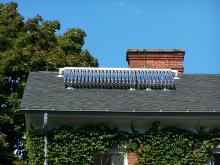
The President’s House Solar Hot Water Project
The President’s House derives its domestic hot water from solar panels mounted on the roof of the building.
Hitchcock Dormitory Solar Hot Water Project
Hitchcock Dorm gets its domestic hot water from solar collectors. The data for how much energy is collected and used, and how much CO2 is saved is reported each month here.
Merrill Sciences Sustainability Tower
Professor of Physics Larry Hunter has installed windmills and photovoltaic panels on the roof of Merrill Sciences and uses information gathered from these installations in his curriculum.
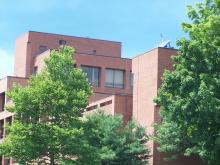 |
|
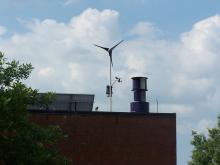 |
Renewable Energy Credits
RECs (renewable energy certificates or credits) represent the non-energy attributes (chiefly environmental) associated with the generation of renewable power. RECs are also called green tags, green tickets, tradable renewable certificate (TRCs) and T-RECs.
A facility generating renewable power has two separable products, commodity electricity and RECs. The commodity electricity is sold at market rates, and the sale of RECs offsets the slightly higher cost of operating the facility. The purchaser of RECs owns the environmental benefits, such as greenhouse gas reductions, associated with the production of that power.
Amherst College purchases 238,000 kWh a year in wind energy RECs from Community Energy. This is enough to offset the emissions associated with powering all the student computers on campus, about 180 tons of greenhouse gas per year. The three-year contract, signed in December 2005, was negotiated as part of the Massachusetts Renewable Energy Purchasers Consortium with several other schools and businesses.
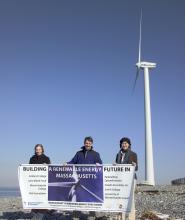 |
|
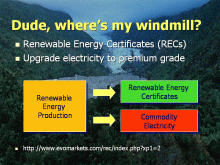 |
Links
Habitat for Humanity Project
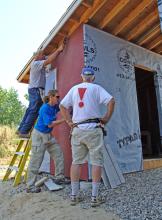
In 2006, Amherst College donated a four-acre parcel of land to Habitat for Humanity. On this parcel, Habitat will build four affordable houses using volunteer labor from the college community. One of the stipulations the College made in its land donation is that Habitat is required to build houses that incorporate sustainable design strategies. Using the Amherst College High-Performance Building Guidelines, the design team for Habitat has incorporated many features such as super insulation, active and passive solar, site orientation, extremely efficient hot water and heating systems and the use of sustainable materials, all of which reduce the energy consumption and minimize the environmental impact of these houses.
One feature that will dramatically lower the environmental impact of these houses is the use of roof-mounted photovoltaic (PV) panels. These panels will generate electricity with no greenhouse gas emissions, thereby reducing the need to burn carbon-based fuel for energy. The panels were obtained using grant funds made available from Massachusetts Technology Collaborative.
Learn more about photovoltaic panels from a Massachusetts manufacturer or Wikipedia.